[EN/PL] At the moment we’re in Hoi An – it’s our first day here, so we haven’t seen a lot so far. We’ll post about our experience on Hoi An here later on today (maybe tomorrow). Although we’ve got something really cool to share:
Banana plantation in the middle of Hanoi
Saturday was the first sunny day we’ve had in Vietnam so far. For some reason we’ve decided that it was perfect weather for a longer walk. After breakfast, we’ve shared our plan to see the Red River with the receptionist at the hotel we’re staying (Hanoi Impressive Hotel – it’s right next to the Cathedral in Hoan Kiem district). When she’s heard about our plan to go across the Chương Dương Bridge (Cầu Chương Dương), she’s adviced us to take another bridge, which is about 400 metres to the North from Chương Dương Bridge, and then go down the stairs in the middle of it.
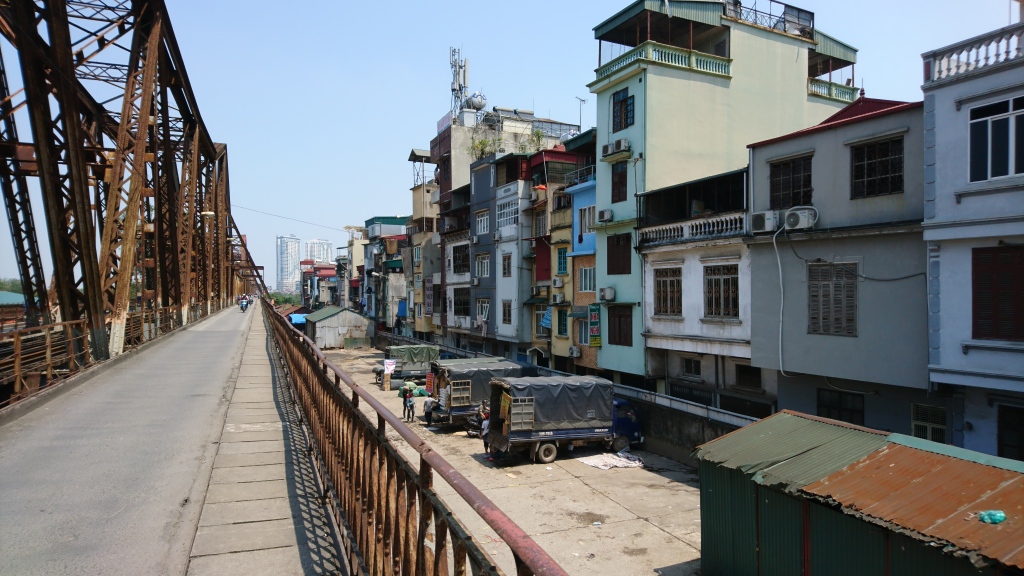
Spice Street!
During our stay in Hanoi we’ve started to name streets we visit after the trade that is most common there. There are streets, when you can find mostly electronics, barbers, handicraft, cloth, jewellery, paint, furniture and so on – and it’s like this in many other districts, not just Hoan Kiem (the Old Town). And on our way to the Long Biên Bridge we’ve accidentally found a street which basically was a spice market. With some help of an old fashioned dictionary, we’ve managed to buy some star anise for a really fair price. After this short stop we’ve finally set our feet on the Long Biên Bridge.
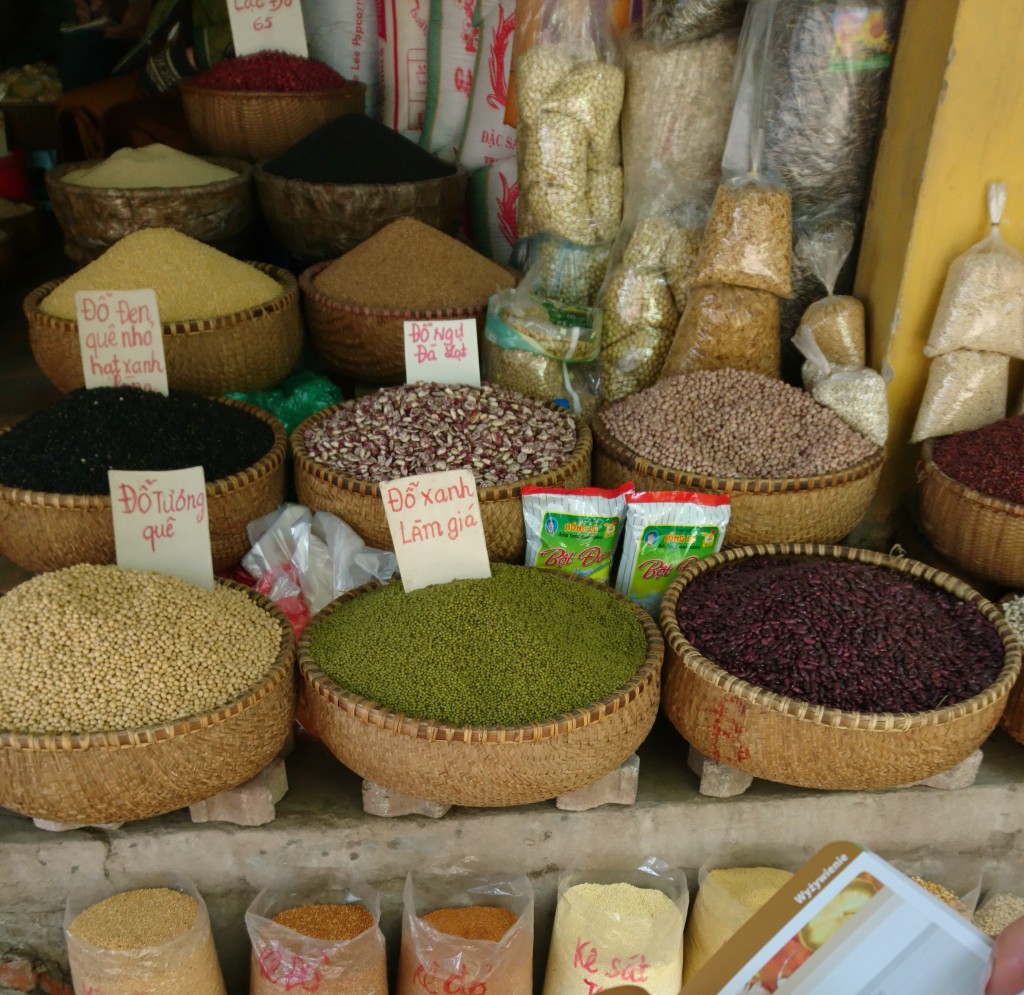
Long Biên Bridge
The bridge itself was constructed in the beginning of XXth century and it was designed by French architects Daydé and Pillé. More than 3000 Vietnamese workers participated in the construction, which took three years (1899-1902). Before the North Vietnam gained independence in 1954, it was called Paul-Doumer Bridge, named after the Governor General of French Indochina. It’s both railway and car (motorbike) bridge, but it’s accessible to pedestrians (there’s a narrow sidewalk on both sides of the bridge).
After about 15 minutes walk and taking some pictures, we’ve finally reached the stairs (actually they look more like a concrete ramp), which led us down to the island on the Red River.
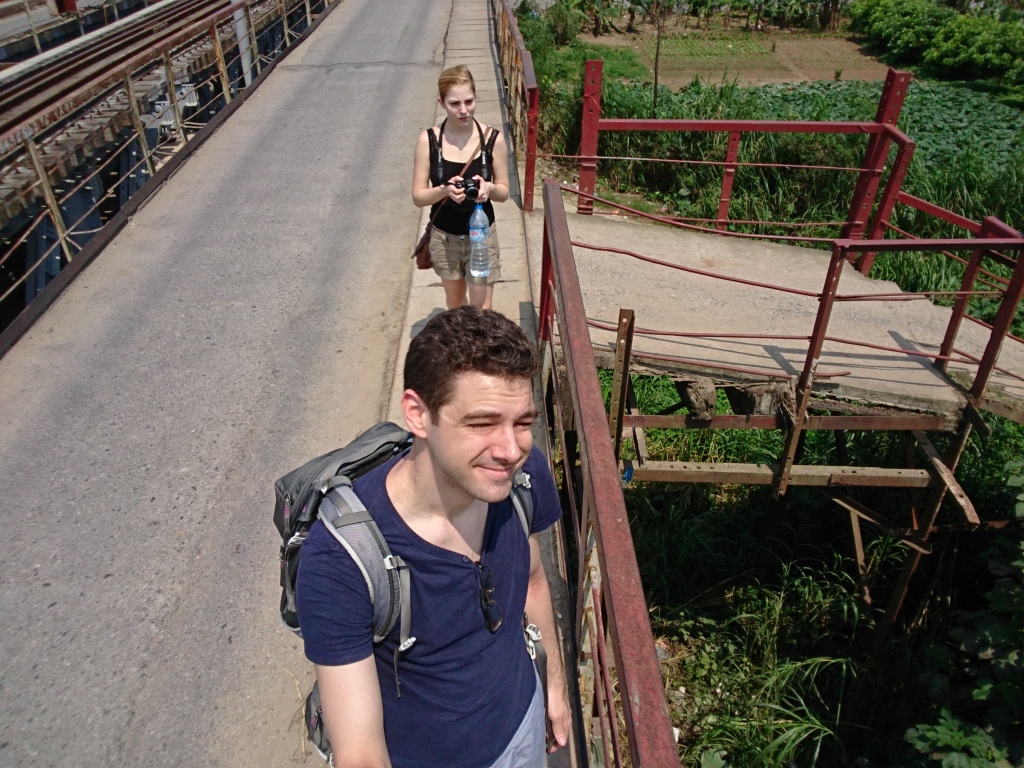
The banana plantation
We’ve reached a huge banana plantation located in the middle of Hanoi, on a rather big island on the Red River. The locals don’t mind if you go there, as long as you don’t try to enter their houses. Also please remember to ask people for permission before you take a picture of them.
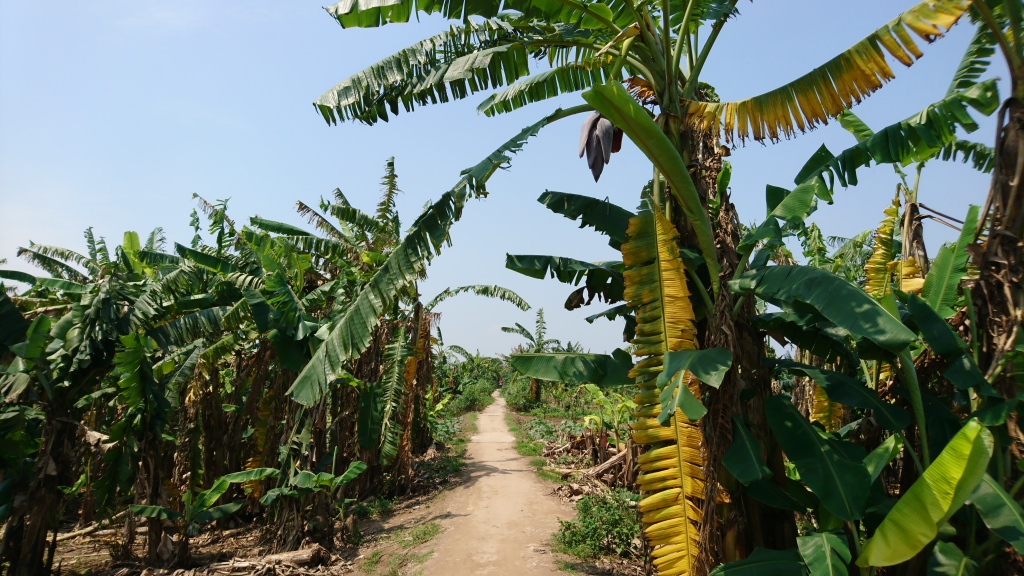
If you’re quiet, you’re likely to see some local fauna :). There are lizards, butterflies, some rodents (rats included) and also mosquitos (don’t forget your DEET!). We had a great time looking out for lizards and exploring the plantation. It was amazing, almost like being in a jungle. It was a nice change to spend some time there and rest from the noise and the crowded streets of Hanoi.
If you’re staying in Hanoi for a couple of days, we can strongly recommend you this little trip – there’s little to none tourists there, it’s an authentic experience.
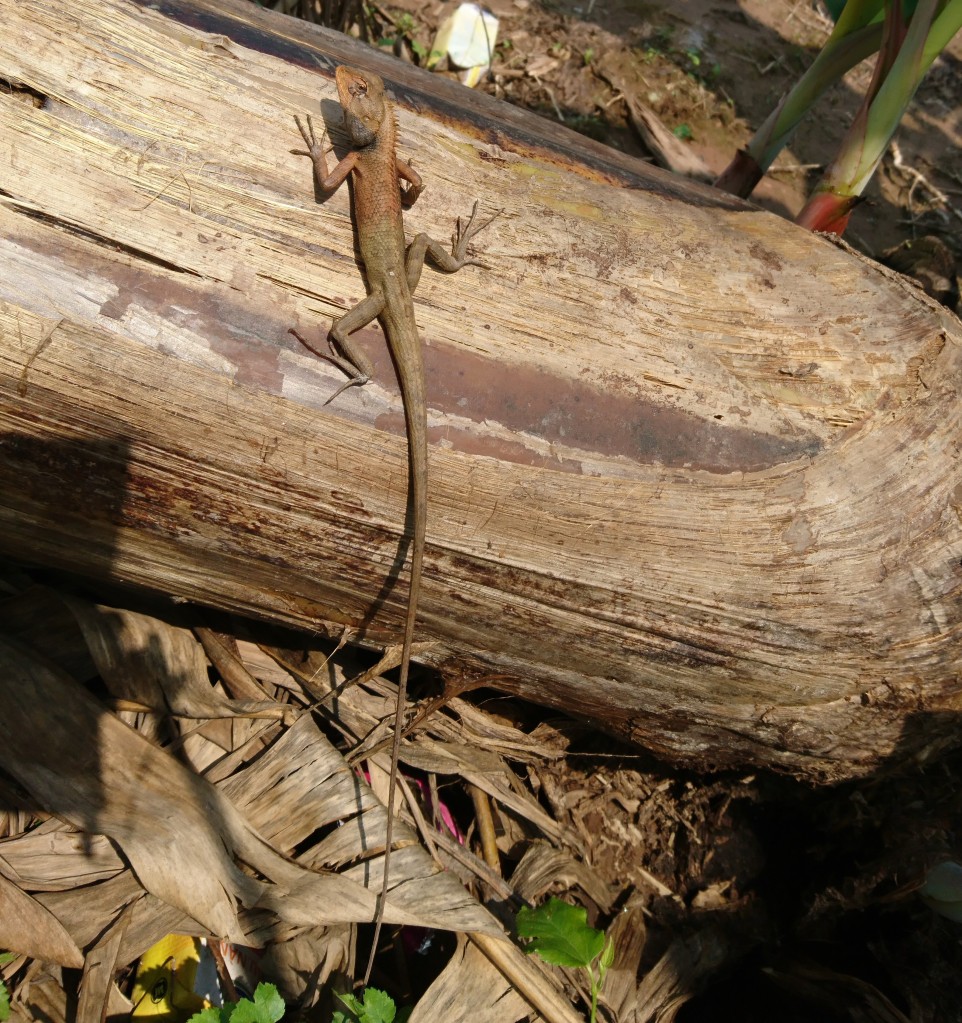
General information and tips:
- The stairs leading to the island are in the middle of the Long Biên Bridge. The stairs are on the both edges of the bridge.
- There’s a lot of mosquitos, take DEET with you
- Watch out for traffic if you’re a fan of taking selfies
- Don’t yell, try not to behave loudly – this way you’re more likely to see some lizards living on the island, also you won’t disturb the farmers.
- Don’t leave the footpaths – don’t destroy the crops!
- You’ll probably need about 2-3 hours for the whole trip – walking the bridge there and back and walking around the island.
- There are almost no tourists, it’s a real experience
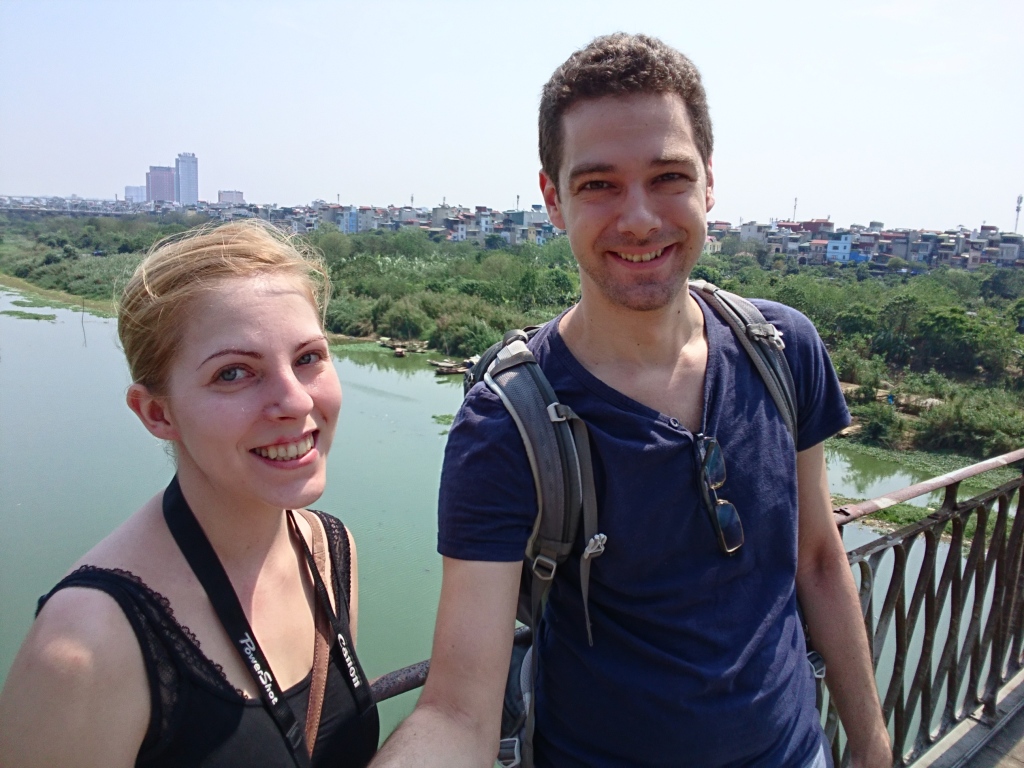
[EN/PL] Obecnie jesteśmy w Hoi An – to nasz pierwszy dzień tutaj, więc nie zwiedziliśmy jeszcze zbyt wiele. Wrzucimy wpis na bloga o naszych przygodach w Hoi An trochę później (lub jutro). Mamy jednak coś fajnego, o czym chcemy dziś opowiedzieć:
Plantacja bananów w samym środku Hanoi
Sobota była dla nas pierwszym słonecznym dniem w Wietnamie. Z jakiegoś powodu zdecydowaliśmy, że to będzie idealna pogoda na dłuższy spacer. Po śniadaniu podzieliliśmy się z recepcjonistką w naszym hotelu (Hanoi Impressive Hotel – zaraz obok Katedry w dzielnicy Hoan Kiem) naszym planem by zobaczyć Rzekę Czerwoną i przejść się mostem Chương Dương. Kiedy usłyszała o naszym planie, doradziła żebyśmy poszli innym mostem, oddalonym około 400 metrów na północ od Chương Dương, a następnie zeszli w dół schodami znajdującymi się w połowie długości mostu.
Ulica Przyprawowa!
W trakcie naszego pobytu w Hanoi, zaczęliśmy nadawać ulicom nazwy odpowiadające rodzajom towarów i usług świadczonych na nich. Są ulice, na których są przede wszystkim elektronika, fryzjerzy, rękodzieło, tkaniny, biżuteria, farby, meble i tak dalej – i schemat ten powtarza się też winnych dzielnicach, nie tylko w Hoan Kiem (Stare Miasto). Po drodze do mostu Long Biên przypadkiem natrafiliśmy na ulicę, która okazała się być targiem przypraw. Z małą pomocą staroświeckiego słownika, udało nam się kupić trochę anyżu gwiazdkowego po rozsądnej cenie. Po tym krótkim postoju w końcu postawiliśmy stopy na moście Long Biên.
Most Long Biên
Most został zbudowany na początku dwudziestego wieku – został zaprojektowany przez francuskich architektów Daydé’a i Pillé’a. W jego budowie uczestniczyło ponad 3000 wietnamskich robotników, a wznoszenie konstrukcji trwało trzy lata (1899-1902). Przed uzyskaniem niepodległości przez Wietnam Półocny w 1954 roku, nazywał się Pont Paul-Doumer, na cześć Gubernatora Generalnego Indochin Francuskich. Jest to zarówno most drogowy jak i kolejowy, ale jest też dostępny dla pieszych (jest wąski chodnik po obu stronach mostu).
Po około piętnastominutowym spacerze i zrobieniu kilku zdjęć, w końcu dotarliśmy do schodów (w zasadzie wyglądały raczej jak betonowa rampa), które poprowadziły nas w doł ku wyspie na Rzece Czerwonej.
Plantacja bananów
Dotarliśmy do gigantycznej plantacji bananów, zlokalizowanej pośrodku Hanoi na całkiem sporej wyspie na Rzece Czerwonej. Miejscowym nie przeszkadza, że się tam chodzi, dopóki nie próbuje się im wchodzić do domostw. Należy też pamiętać by zapytać ludzi o pozwolenie zanim zrobi im się zdjęcie.
Poza bananowcami, są tu też inne uprawy – takie jak dynie, czy zioła, ale są to jednak przede wszystkim bananowce. Mnóstwo bananowców. Jeśli będziesz zachowywać się cicho, masz szansę zobaczyć trochę lokalnej fauny :). Są tam jaszczurki, motyle, trochę gryzoni (szczury też) a także komary (nie zapomnij DEETa!). Swietnie się bawiliśmy wypatrując jaszczurek i zwiedzając plantację. To było niesamowite przeżycie, prawie jakbyśmy byli w dżungli – miła odmiana od głośnych i zatłoczonych ulic Hanoi.
Jeśli zatrzymujesz w Hanoi na co najmniej kilka dni, to zdecydowanie polecamy tę małą wycieczkę – praktycznie nie ma tam turystów i jest to autentyczne przeżycie.
Ogólne informacje i wskazówki:
- Schody prowadzące na wyspę znajdują się pośrodku mostu Long Biên. Schody znajdują się po obu stronach mostu.
- Jest tam dużo komarów – weź ze sobą DEETa
- Uważaj na ruch uliczny, jeśli jesteś fanem robienia selfie
- Nie krzycz, staraj się nie zachowywać głośno – w ten sposób masz większą szansę na spotkanie jaszczurek żyjących na wyspie i nie będziesz przeszkadzać rolnikom
- Nie schodź ze ścieżek – nie niszcz upraw!
- Będziesz potrzebować około 2-3 godzin na całą wycieczkę – przejście mostem w tę i z powrotem i zwiedzanie wyspy
- Nie ma tam praktycznie żadnych turystów – to autentyczne przeżycie
Oh, Im quite surprised that you guys walked to the the island near Long Bien Bridge. Even people living in Hanoi do not often go there, let alone foreign visitors (especially tourism purpose). It is known as favorite place for some men naked swimming that we called “tam tien” 😀
LikeLiked by 2 people
Yeah, we’ve seen them 🙂 our Vietnamese friend told us their story when she heard that we went there. We love exploring 🙂
LikeLike
Actually, the way you named the street in Hanoi was quite brilliant! The Hanoian also named the streets based on the items that are most commonly traded on that street. There are 36 streets like that in Hanoi Old Quarter 🙂
LikeLiked by 2 people
Oh… Seriously? :)) We didn’t lnew that! We started naming streets like that to navigate better around the City 🙂 Thanks for letting us know!
LikeLiked by 1 person
You welcome! The name of those streets are even offically recognized 🙂
LikeLiked by 1 person